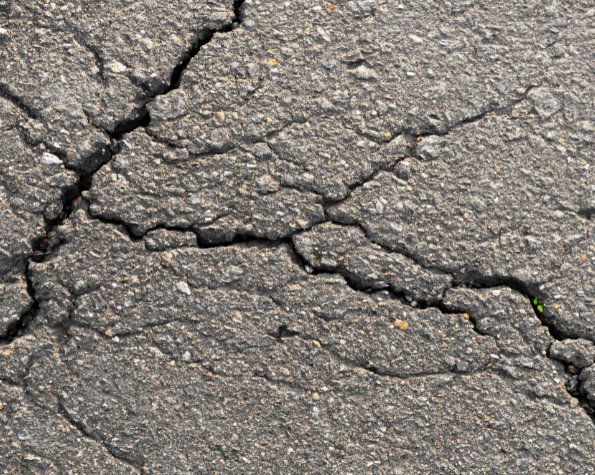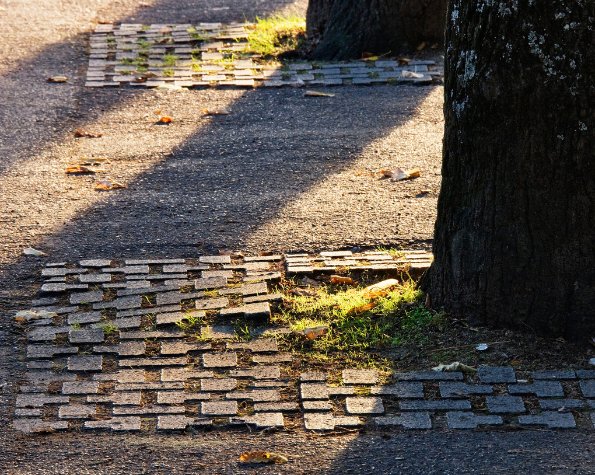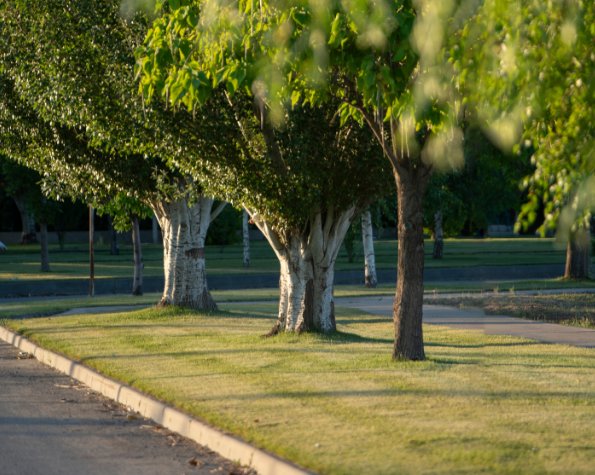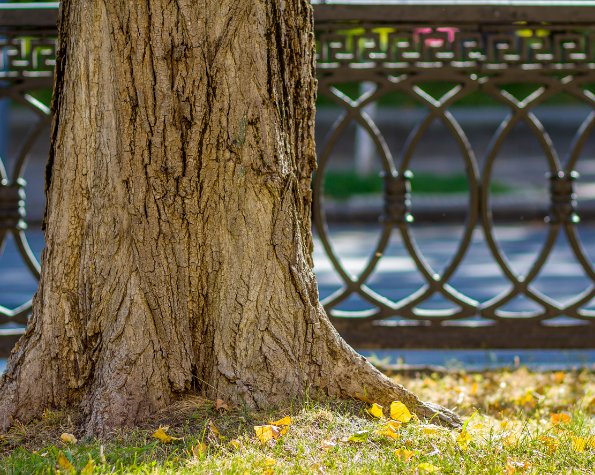Tree roots lifting pavement is more than a crack in the concrete. It’s a sign of deeper conflict between the tree and your property. At Dragonetti Tree Removal, we see this every year across New York. The roots aren’t trying to cause damage, they’re growing where they can find oxygen and water. But when that’s under your driveway or sidewalk, the result is cracked, lifted pavement, and of course a big tripping hazard.


Can It Be Fixed Without Removing the Tree?
Sometimes. But it depends on the tree type and the amount of damage to the root and the tree. If the tree is young, the roots aren’t too advanced, and the pavement is only a bit lifted, there are a few options below.
But if the pavement is severely cracked, the roots are exposed, or the tree is already showing signs of decline, these fixes won’t last. They’re more temporary solutions to a permanent problem.
In most cases, once roots have compromised the pavement, the tree is too close for its own good and removal becomes the smarter, safer choice.
Signs Your Tree Roots Are Damaging Pavement
- Sidewalk or driveway has started to rise or tilt
- Cracks are spreading from the base of the tree outward
- Concrete or pavement is splitting along edges
- Tree roots are visible at the surface near pavement
- Pavement feels spongy or unstable when walked on
- Water pools in new areas after rain
- Neighbors or visitors have tripped on the uneven surface
- The ground near the tree is heaving or buckling
- New cracks appear every spring or after heavy rain
- Tree is planted within 5 feet of the pavement
- Roots are growing under utility lines or near foundation
- One side of the sidewalk is higher than the other
- Grass won’t grow over the lifted area
- The tree is a known aggressive rooter
- You’ve had repairs done before, and the damage came back
- The tree is older than 15 years and near a hardscape


Risks of Root Heave
- Sidewalk repairs from root heave
- Expensive driveway repairs due to tree roots
- Tripping hazards from raised pavement
- Liability for injuries caused by tree root damage
- Fines or city violations for unsafe sidewalks
- Damaged property
- Higher insurance premiums or denied claims
- Emergency removal after storm damage
- Difficulty installing new landscaping near damaged hardscapes
- Long-term structural damage from ignored root pressure
- Foundation stress from aggressive root systems
Ways to Fix Root Heave
Option 1: Repair or Reinforce (If Damage Is Minor)
If the lift is small and the tree is healthy, you might be able to repair the pavement with a thicker slab or a gravel base. This can help, but it won’t stop the roots from growing.
Option 2: Install a Root Barrier or Bridge (If Tree Is Worth Saving)
For younger trees, a root barrier can help direct roots downward. Bridging the sidewalk protects both the tree and removes the hazard. However, both barriers and bridges require permits, engineering, and ongoing maintenance.
Option 3: Remove the Tree (If Damage Is Severe or Tree Is Dying)
If the pavement is badly damaged, the roots are too advanced, or the tree is already stressed, affordable tree removal is almost always the best choice, especially if that tree is already dying.


Root Heave Liability: Driveway vs. Sidewalk
Driveway & Yard Damage (Private Property)
If roots are lifting your driveway, patio, or walkway within your property line, you’re responsible for repairs even if the tree is healthy. Homeowners insurance typically treats this as maintenance, not a covered loss.
Sidewalk Damage (Public Right-of-Way)
This is where liability gets serious. In most parts of New York, including NYC, Long Island, Westchester, and many Hudson Valley towns, property owners are legally responsible for maintaining the sidewalk adjacent to their lot, even though it’s public space. If your tree’s roots cause tripping hazards or cracks in the sidewalk, you could be held liable.
NY Law Holds Homeowners Liable
Municipalities often issue violations requiring repairs, and some have formal programs (like NYC’s Sidewalk Repair Program) that allow homeowners to complete fixes under city guidelines. Under New York law, you cannot avoid responsibility because the tree is old or was planted by a previous owner.
FAQs
Sometimes, but it’s risky. Cutting large roots can destabilize the tree and lead to failure. If the roots are under pavement, cutting them often does more harm than good. In most cases, removal is safer than root pruning.
No, paving over roots does not solve root heave. Paving over exposed roots suffocates them and accelerates decay. It also doesn’t stop the heaving, it just delays it. The roots will continue to grow and eventually push up the new surface.
It depends. If the tree is healthy and the damage is minor, it might be possible to install a root barrier or bridge the pavement. But if the roots are already causing significant uplift, the tree is likely too close for its own good. In those cases, removal is often the best long-term solution.
Ignoring it turns a repairable issue into a liability. A slightly raised edge today becomes a serious trip hazard tomorrow. NYC property owners can be held liable if someone is injured by a tripping hazard caused by tree roots lifting pavement, even if the tree is healthy. Cities may fine you for unsafe walkways, and potential buyers will see it as a red flag during inspections. Plus, the longer the roots grow unchecked, the worse the damage gets. Eventually, you could face higher repair costs, or worse, a falling tree.
In most cases, removal is safer than cutting large roots. Cutting major structural roots weakens the tree’s stability and can cause it to fall in the next storm. It also opens the tree to disease and decay. Once roots are under pavement, they’re hard to manage without causing long-term problems. If the tree is large, mature, or already showing signs of stress, removal is often the smarter, more cost-effective choice.
Yes, not because they’re strong enough to “break” it like a hammer, but because they grow relentlessly over time. As roots expand, they exploit small cracks, joints, or weak points in the concrete. Even thick slabs can heave if the soil underneath shifts or erodes. In freeze-thaw cycles common in NY, water seeps into micro-cracks, freezes, expands, and weakens the surface, giving roots an easy path. Once uplift starts, it usually keeps getting worse.
Most homeowners’ insurance policies do not cover gradual damage from tree roots. Root heave is considered maintenance, not a sudden event, so claims are often denied. Some policies cover damage if a tree falls during a storm, but not the slow cracking and lifting caused by living roots.
If someone trips and sues, liability coverage might apply, but only if you’ve been proactive about safety. That’s why we recommend getting a professional tree evaluation.
